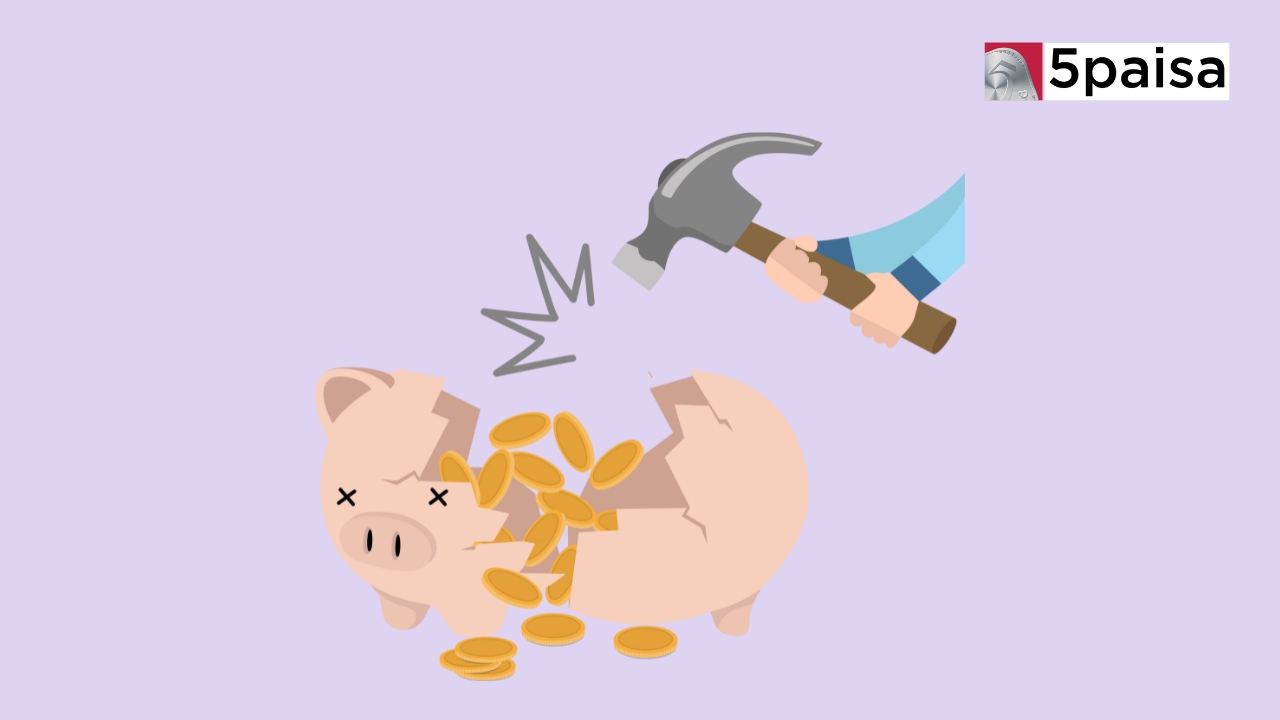Premature Withdrawal Of Fixed Deposit

Fixed deposits (FDs) are a popular investment choice in India, offering a safe way to grow your savings with guaranteed returns. However, there may be situations where you need access to your money before the maturity date of your FD. This process is known as premature withdrawal, and it's essential to understand its implications.
What Is Premature Withdrawal Of Fixed Deposit?
Premature withdrawal refers to withdrawing funds from a fixed deposit account before maturity. Fixed deposits typically have a lock-in period, during which the depositor agrees not to withdraw the money. However, most banks provide the option of premature withdrawal, allowing you to access your funds in case of emergencies or changing financial circumstances. It's important to note that premature withdrawal often comes with a penalty, which can vary depending on the bank and the tenure of the FD.
Penalty For Premature Fixed Deposit Withdrawal
When you withdraw your fixed deposit prematurely, banks usually charge a penalty to compensate for the loss of interest income they would have earned if the deposit had remained until maturity. The penalty can be in the form of a reduced interest rate or a flat fee. Here are some common practices followed by banks regarding penalties for premature FD withdrawal:
● Most banks charge a penalty ranging from 0.5% to 1% of the interest rate on the prematurely withdrawn amount.
● Some banks may not charge any penalty if you withdraw the FD due to an emergency or if you plan to reinvest the amount in another investment product the bank offers.
● If you withdraw the FD within 7 days of opening it, many banks do not pay any interest on the deposit.
● In addition to the penalty, the interest rate applicable to the prematurely withdrawn amount is usually reduced from the originally agreed-upon rate. For example, if you had an FD at 8% interest for 3 years but withdrew it after 1 year, the interest rate for that first year may be reduced to 6%.
It's important to note that premature withdrawal of a fixed deposit can result in a significant loss of interest income, especially if the deposit has a longer tenure. Therefore, unless absolutely necessary, it's advisable to avoid premature withdrawals.
How To Break The Fixed Deposit Before Maturity?
If you find yourself in a situation where you need to withdraw your fixed deposit before its maturity date, you can do so both online and offline. For an offline premature withdrawal, you will need to visit the nearest branch of your bank, submit the FD receipt, and complete a withdrawal form along with any required documentation. Some banks also allow online premature withdrawals through their Internet banking platforms, provided the FD was initially opened online.
It's important to note that certain banks may have specific requirements or restrictions regarding online premature withdrawals, such as a minimum tenure or a cooling-off period.
How To Avoid The Penalty On Premature Withdrawal Of FD?
While premature withdrawal of a fixed deposit may be necessary in certain situations, it's always better to avoid the associated penalties if possible. Here are some strategies you can consider:
● FD Laddering: FD laddering involves investing in multiple fixed deposits with different maturity dates, creating a staggered investment portfolio. This approach ensures that you can access a portion of your funds regularly without incurring penalties. For example, if you have a lump sum of ₹5 lakh, you can divide it into five separate FDs of ₹1 lakh each, with maturity dates ranging from 1 year to 5 years.
● Loan against FD: Instead of withdrawing your FD prematurely, you can opt for a loan against the fixed deposit. Most banks offer this facility, where you can borrow a certain percentage (usually up to 90%) of the FD amount at an interest rate slightly higher (1-2%) than the FD interest rate. This way, your FD remains intact, and you can repay the loan once your financial situation improves.
● Sweep-in Facility: Some banks offer a sweep-in facility, which allows you to link your savings account to a fixed deposit account. Any surplus funds in your savings account above a specified threshold are automatically swept into the linked FD account. This facility ensures you earn higher interest on your idle funds while maintaining liquidity in your savings account.
Conclusion
Premature withdrawal of a fixed deposit is common, driven by various financial circumstances. While banks provide this facility, it's important to understand the associated penalties and implications. By employing strategies like FD laddering, taking a loan against the FD, or utilising the sweep-in facility, you can avoid or minimise the impact of premature withdrawal penalties. Ultimately, it's crucial to carefully plan your investments and maintain an emergency fund to avoid disrupting your fixed deposit investments prematurely.
Frequently Asked Questions
What Documents Are Required For Premature Withdrawal?
Is It Possible To Partially Withdraw Funds From A Fixed Deposit?
How Is The Penalty For Premature Withdrawal Calculated?
Are There Any Tax Implications For Premature Withdrawal Of A Fixed Deposit?
- Flat ₹20 Brokerage
- Next-gen Trading
- Advance Charting
- Actionable Ideas
Trending on 5paisa
03
 5paisa Research Team
5paisa Research Team
Disclaimer: Investment in securities market are subject to market risks, read all the related documents carefully before investing. For detailed disclaimer please Click here.

 5paisa Research Team
5paisa Research Team
 Sachin Gupta
Sachin Gupta